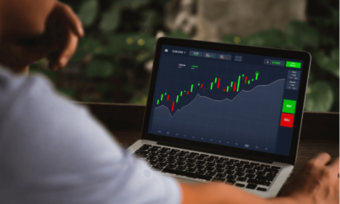What is a share buy-back? Some pros and cons explained

Share buy-backs have been a hot topic in the news over the past years. We take a look at some of the risks and benefits of share buy-backs for investors.
There was a share buy-back blitz in the second half of 2018, ASX-listed companies spent more than $50 billion buying back their own stock – the most for a six-month period in 12 years, according to the Australian Financial Review (AFR). More recently, the Commonwealth Bank of Australia (CBA) announced that they would conduct an off-market share buy-back worth $6 billion. So, what is a share buy-back exactly and why are companies making this move?
What is share buy-back?
A share buy-back happens when a company offers some or all of its shareholders the opportunity to sell their shares – either all or just a portion of them – back to the company. When presented with the opportunity to sell back shares investors will have to weigh up their options and find out the reasons behind this strategic move.
What are the different types of share buy-backs?
According to ASIC, there are a few different ways for an organisation to organise a share buy-back.
- Selective buy-backs are when a company buys back shares from all or select shareholders on terms that are specific to individual shareholders or groups of shareholders.
- Equal access schemes see a company offer to buy back shares from all shareholders on the same terms.
- Employee share scheme buy-backs are when a company makes an offer to buy shares held by current and former employees.
Why would a company buy back its shares?
A company may offer a share buy-back for several reasons and shareholders should consider taking the time to familiarise themselves with these before agreeing to take up any offer on the table.
It may want to change the structure of how it finances its overall operations and growth, using debt (money borrowed) instead of equity (money raised selling shares to investors). Buying back shares can also increase the company’s earnings per share, as when the number of shares on issue is reduced, the profit is split between fewer shares, which can help boost the company’s share price.

Investor website Investopedia states it can also be a strategic move by the management of an organisation who may want to signal to the market they believe the stock to be undervalued. In addition, it can reduce the risk of a takeover, as a company is a more attractive target if it has large cash deposits which the acquiring company can use to offset the cost of the takeover.
What could a buy-back mean for shareholders?
If you decide to sell shares back to a company, the ATO explains that the tax treatment you receive may be different compared to if you had sold the shares another way. In instances where a buy-back affects a large number of investors, the ATO says it may publish specific guidance on the tax implications.
Either way, it can be important to seek independent tax advice before deciding whether to proceed with a share buy-back, so you are fully informed as to your individual tax obligations. According to William Buck Chartered Accountants, factors such as your marginal tax rate and the availability of franking credits in the company could impact any tax liability you may have.
Is a share buy-back a good thing?
The AFR reported in August 2019 that most Australian fund managers agreed companies returning money to investors was a positive move. As an example of a potential positive outcome, there is the possibility the buy-back could boost the share price, which would be welcome news to some investors, albeit only those who chose to retain some shares in the company.
However, there are critics who question whether a buy-back really is the best way for a company to spend its money, preferring instead for it to invest in new products and services and future growth opportunities. In a recent speech to the Business Council of Australia, Treasurer Josh Frydenberg challenged corporate Australia to rein in the amount of share buy-backs being offered, and focus instead on using any surplus capital to invest in long-term growth and increasing productivity.
What are the risks involved with a share buy-back?
There have been some cases of underperforming companies using a buy-back to artificially prop up their share price and fend off takeovers. In 2016, retailer Oroton announced a buy-back scheme which was only 10% complete when it went into administration and left some investors short-changed. As discussed above, understanding why a business might be undertaking a buy-back can be crucial for investors.
View all Canstar rated Online Share Trading products. View Disclosures.
Main image source: katjen /Shutterstock
This article was reviewed by our Content Producer Marissa Hayden before it was updated, as part of our fact-checking process.

Try our Online Share Trading comparison tool to instantly compare Canstar expert rated options.







